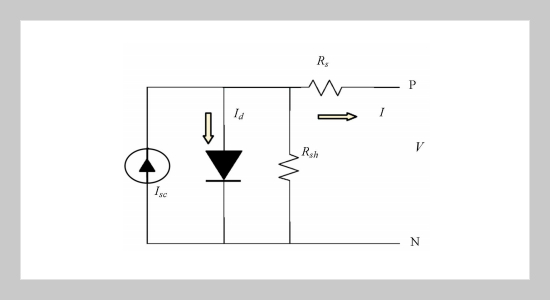REFERENCES
- [1] Ibrahim, H. E.-S. A. and Houssiny, F. F., “Microcomputer Controlled Buck Regulator for Maximum Power Point Tracker for DC Pumping System Operates from Photovoltaic System,” Proceedings of the IEEE International Fuzzy Systems Conference, August 22�25, Vol. 1, pp. 406�411 (1999).
- [2] Midya, P., Kerin, P. T., Turnbull, R. J., Reppa, R. and Kimball, J., “Dynamic Maximum Power Point Tracker for Photovoltaic Applications,” Proceedings of the IEEE Power Electronics Specialists Conference, PESC, Vol. 2, pp. 1710�1716 (1996).
- [3] Enslin, J. H. R. and Snyman, D. B., “Simplified FeedForward Control of the Maximum Power Pont in PV Installations,” Proceedings of the IEEE International Conference on Power Electronics Motion Control, Vol. 1, pp. 548�553 (1992).
- [4] Bose, B. K., Szczeny, P. M. and Steigerwald, R. L., “Microcomputer Control of a Residential Photovoltaic Power Conditioning System,” IEEE Transactions on Industrial Electronics, Sept./Oct., Vol. IA-21, pp. 1182� 1191 (1985).
- [5] Kuo, Y. C., Liang, T. J. and Chen, F. C., “Novel Maximum-Power-Point-Tracking Controller for Photovoltaic Energy Conversion System,” IEEE Transactions on Industrial Electronics, Vol. 48, pp. 594�601 (2001).
- [6] Koutroulis, E., Kalaitzakis, K. and Voulgaris, N. C., “Development of a Microcontroller-Based Photovoltaic Maximum Power Point Tracking Control System,” IEEE Transactions on Power Electronics, Vol. 16, pp. 46�54 (2001).
- [7] Hussein, K. H., Muta, I., Hoshino, T. and Osakada, M., “Maximum Photovoltaic Power Tracking: an Algorithm for Rapidly Changing Atmospheric Condition,” IEE Proc.-Gener. Transm. Distrib, Vol. 142, pp. 59�64 (1995).
- [8] Matsui, M., Kitano, T., Xu, D. H. and Yang, Z. Q., “A New Maximum Photovoltaic Power Tracking Control Scheme Based on Power Equilibrium at DC Link,” Proceedings of the IEEE Industrial Electronics Society 25th Annual Conference, pp. 804�809 (1999).
- [9] Bodur, M. and Ermis, M., “Maximum Power Point Tracking for Low Power Photovoltaic Solar Panels,” Proceedings of the IEEE Electro Technical Conference, pp. 758�761 (1994).
- [10] Simoes, M. G., Franceschetti, N. N. and Friedhofer, M., “A Fuzzy Logic Based Photovoltaic Peak Power Tracking Controller,” Proceedings of the IEEE International Symposium on Industrial Electronics, pp. 300�325 (1998).
- [11] Mahmoud, A. M. A., Mashaly, H. M., Kandil, S. A., Khashab, H. E. and Nashed, M. N. F., “Fuzzy Logic Implementation for Photovoltaic Maximum Power Tracking,” Proceedings of the IEEE International Workshop on Robot and Human Interactive Communication, Osaka, Japan, 27�29 (2000).









